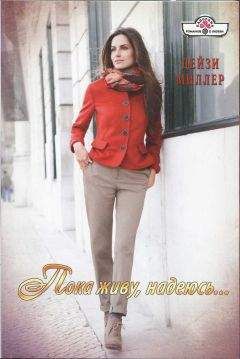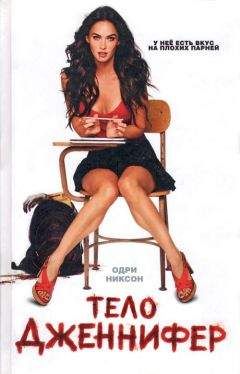Ричард Овери - Сталин и Гитлер
Ree, E. van ‘Stalin’s Organic Theory of the Party’, Russian Review, 52 (1993), pp. 43–57.
Rees, E. A. (ed.) Decision-Making in the Stalinist Command Economy, 1932–37 (London, 1997).
Rees, E. A. ‘Stalin and Russian Nationalism’, in G. Hosking and R. Service (eds) Russian Nationalism Past and Present (London,
1998), pp. 77–105.
Reese, R. R. Stalin’s Reluctant Soldiers: a Social History of the Red Army 1925–1941 (Lawrence, Kans., 1996).
Reibel, C.-W. Das Fundament der Diktatur: Die NSDAP-Ortsgruppen 1932–1945 (Paderborn, 2002).
Reichel, P. ‘Festival and Cult: Masculine and Militaristic Mechanisms of National Socialism’, in J. A. Mangan (ed.) Shaping the
Superman: Fascist Body as Political Icon – Aryan Fascism (London, 1999), pp. 153–68.
Reid, S. ‘Socialist Realism in the Stalinist Terror: the Industry of Socialism Art Exhibition, 1935–41’, Russian Review, 60 (2001),
pp. 153–84.
Reidel, P. ‘Aspekte ästhetischer Politik im nationalsozialistischen Staat’, in U. Hermann and U. Nassen (eds) Formative Ästhetik
im Nationalsozialismus. Intentionen, Medien und Praxisformen totalitärer ästhetischer Herrschaft und Beherrschung
(Weinheim, 1994).
Reilly, J. et al. (eds) Belsen in History and Memory (London, 1997).
Reinhardt, K. Moscow – the Turning Point: the Failure of Hitler’s Strategy in the Winter of 1941–1941 (Oxford, 1992).
Renner, A. ‘Defi ning a Russian Nation: Mikhail Katkov and the “Invention” of National Polities’, Slavonic and East European Review,
81 (2003), pp. 659–82.
Reuth, R. Goebbels (London, 1993).
Rhodes, R. Masters of Death: The SS Einsatzgruppen and the Invention of the Holocaust (New York, 2002).
Rich, N. Hitler’s War Aims (2 vols, London, 1973–4).
Rigby, T. H. The Changing Soviet System: Mono-organisational Socialism from its Origins to Gorbachev’s Restructuring
(London, 1990).
Rigby, T. H. Communist Party Membership in the USSR 1917–1967 (Princeton, NJ, 1968).
Rigby, T. H. ‘Staffi ng USSR Incorporated: The Origins of the Nomenklatura System’, Soviet Studies, 40 (1988), pp. 523–37.
Rigby, T. H. ‘Was Stalin a Disloyal Patron?’ Soviet Studies, 38 (1996), pp. 311–24.
Ritchie, J. M. German Literature under National Socialism (London, 1983).
Rittersporn, G. T. ‘Extra-Judicial Repression and the Courts: Their Relationship in the 1930s’, in P. H. Solomon (ed.) Reforming
Justice in Russia 1864–1996 (New York, 1997), pp. 207–27.
Rittersporn, G. T. Stalinist Simplifi cations and Soviet Complications: Social Tensions and Political Confl ict in the USSR, 1933–
1953 (Reading, 1991).
Rizzi, B. The Bureaucratisation of the World. The USSR: Bureaucratic Collectivism (London, 1985).
Roberts, C. A. ‘Planning for War: the Red Army and the Catastrophe of 1941’, Europe – Asia Studies, 47 (1995), pp. 1293–326.
Roberts, G. ‘The Soviet Decisions for a Pact with the Soviet Union’, Soviet Studies, 44 (1992), pp. 67–87.
Roberts, G. The Soviet Union and the Origins of the Second World War 1933–1941 (London, 1995).
Roberts, J. Walter Benjamin (London, 1982).
Robin, R. Socialist Realism. An Impossible Aesthetic (Stanford, 1992).
Rogovin, V. Z. 1937: Stalin’s Year of Terror (Oak Park, Mich., 1998).
Rogovin, V. Z. Vlasti i oppozi’tsii (Moscow, 1993).
Rohwer, J. and Monakov, M. Stalin’s Ocean-Going Fleet: Soviet Naval Strategy and Shipbuilding Programme 1935–1953
(London, 2001).
Rosefi elde, S. ‘Stalinism in Post-Communist Perspective: New Evidence on Killings, Forced Labor and Economic Growth in the 1930s’,
Europe – Asia Studies, 48 (1996), pp. 959–87.
Roseman, M. ‘Recent Writing on the Holocaust’, Journal of Contemporary History, 36 (2001), pp. 361–72.
Roseman, M. The Villa, the Lake, the Meeting: Wannsee and the Final Solution (London, 2002).
Rosenberg, W. and Siegelbaum, L. (eds) Social Dimensions of Soviet Industrialization (Bloomington, Ind., 1993).
Rosenfeldt, N. ‘“The Consistory of the Communist Church”: The Origins and Development of Stalin’s Secret Chancellery’, Russian
History, 9 (1982), pp.300–324.
Rosenfeldt, N., Jensen, B. and Kulavig, E. (eds) Mechanisms of Power in the Soviet Union (London, 2000).
Rosenthal, B. G. New Myth, New World: from Nietzsche to Stalin (Pittsburgh, 2002).
Rosenthal, B. G. ‘Nietzsche, Nationality, Nationalism’, in A. Freifeld, P. Bergmann and B. G. Rosenthal (eds) East Europe reads
Nietzsche (New York, 1998), pp. 181–206.
Rosenthal, B. G. (ed.) The Occult in Russian and Soviet Culture (Ithaca, NY, 1997).
Rossi, J. The Gulag Handbook (New York, 1989).
Rossman, J. J. ‘The Teikovo Cotton Workers’ Strike of April 1932: Class, Gender and Identity Politics in Stalin’s Russia’, Russian
Review, 56 (1997), pp. 44–69.
Roth, C. Parteikreis und Kreisleiter der NSDAP unter besonderer Berücksichtigung Bayerns (Munich, 1997).
Roth, K. H, Facetten des Terrors. Der Geheimdienst der ‘Deutsche Arbeitsfront’ (Bremen, 2000).
Rousso, H. (ed.) Stalinisme et Nazisme. Histoire et mémoire comparées (Paris, 1999).
Rowley, D. G. ‘Imperial versus national discourse: the case of Russia’, Nations and Nationalism, 6 (2000), pp. 23–42.
Roxburgh, A. Pravda: Inside the Soviet News Machine (London, 1987).
Rubinstein, J. Tangled Loyalties: The Life and Times of Ilya Ehrenburg (London, 1996).
Rummell, R. Lethal Politics: Soviet Genocide and Mass Murder since 1917 (New Brunswick, NJ, 1990).
Russell, E. P. ‘“Speaking of Annihilation”: Mobilizing for War against Human and Insect Enemies’, Journal of American History
(1996), pp. 1505–29.
Rzhevsky, N. (ed.) Modern Russian Culture (Cambridge, 1998).
Sabrin, B. Alliance for Murder: the Nazi Ukrainian-Nationalist Partnership in Genocide (London, 1991).
Salkeld, A. A Portrait of Lent Riefenstahl (London, 1997).
Samuelson, L. ‘Mikhail Tukhachevsky and War-Economic Planning: Reconsiderations on the Pre-War Soviet Military Build-Up’,
Journal of Slavic Military Studies, 9 (1996), pp. 804–47.
Samuelson, L. Plans for Stalin’s War Machine: Tukhachevskii and Military-Economic Planning, 1925–1941 (London, 2000).
Samuelson, L. ‘The Red Army and economic planning, 1925–40’, in J. Barber and M. Harrison (eds) The Soviet Defence-Industry
Complex from Stalin to Khrushchev (London, 2000), pp. 47–69.
Sapir, J. Les fl uctuations économiques en URSS 1941–1945 (Paris, 1989).
Sapir, J. The Economics of War in the Soviet Union during World War II’, in I. Kershaw and M. Lewin (eds) Stalinism and Nazism:
Dictatorships in Comparison (Cambridge, 1997), pp. 208–36.
Saur, C. ‘Rede als Erzeugung von Komplizentum. Hitler und die öffentliche Erwähnung der Juden Vernichtung’, in J. Kopperschmidt
(ed.) Hitler als Redner (Munich, 2003), pp. 413–40.
Schaer, R., Claeys, G. and Sargent, L. T. (eds) Utopia: the Search for the Ideal Society in the Western World (New York, 2000).
Schapiro, L. The Communist Party of the Soviet Union (London, 1960).
Schauff, F. ‘Company Choir of Terror: The Military Council of the 1930s – the Red Army Between the XVIIth and XVIIIth Party
Congresses’, Journal of Slavic Military Studies, 12 (1999), pp. 123–63.
Schechter, J. and Luchkov, V. (eds) Khrushchev Remembers: the Glasnost Tapes (New York, 1990).
Scherer, K. ‘Asoziale’ im Dritten Reich (Münster, 1990).
Schieder, W. ‘Die NSDAP vor 1933. Profi l einer faschistischen Partei’, Geschichte und Gesellschaft, 19 (1993), pp. 141–54.
Schley, J. Nachbar Buchenwald: Die Stadt Weimar und ihr Konzentrationslager 1937–1945 (Cologne, 1999).
Schmid, H.-D. (ed.) Zwei Städte unter dem Hakenkreuz: Widerstand und Verweigerung in Hannover und Leipzig 1933–1945
(Leipzig, 1994).
Schmider, K. ‘No Quiet on the Eastern Front: the Suvorov Debate in the 1990s’, Journal of Slavic Military Studies, 10 (1997), pp.
181–94.
Schmidt, H. ‘Beabsichtige ich die Todesstrafe zu beantragen’: die nationalsozialistische Sondergerichtsbarkeit im
Oberlandesgerichtsbezirk Düsseldorf 1933 bis 1945 (Essen, 1998).
Schmiechen-Ackermann, D. ‘Der “Blockwart”’, Vierteljahrshefte für Zeitgeschichte, 48 (2000), pp. 575–602.
Schmiechen-Ackermann, D. Diktaturen im Vergleich (Darmstadt, 2002).
Schmiechen-Ackermann, D. Nationalsozialismus und Arbeitermilieus: Der nationalsozialistische Angriff auf die proletarischen
Wohnquartiere und die Reaktion in den sozialistischen Vereinen (Bonn, 1998).
Schmölders, C. Hitlers Gesicht: Eine physiognomische Biographie (Munich, 2000).
Schneider, J. and Harbrecht, H. (eds) Wirtschaftsordnung und Wirtschaftspolitik in Deutschland (1933–1993) (Stuttgart, 1996).
Schneider, M. Unterm Hakenkreuz: Arbeiter und Arbeiterbewegung 1933 bis 1939 (Bonn, 1999).
Schoenbaum, D. Hitler’s Social Revolution: Class and Status in Nazi Germany 1933–1939 (New York, 1966).
Scholder, K. A Requiem for Hitler and Other New Perspectives on the German Church Struggle (Philadelphia, 1989).
Scholder, K. ‘Die evangelische Kirche in der Sicht der nationalsozialistischen Führung’, Vierteljahrshefte für Zeitgeschichte, 16
(1968), pp. 15–35.
Schubert-Weller, C. Hitler-Jugend: Vom ‘Jungsturm Adolf Hitler’ zur Staatsjugend des Dritten Reiches (Weinheim, 1993).
Schulte, J. E. Zwangsarbeit und Vernichtung: Das Wirtschaftsimperium der SS (Paderborn, 2001).
Schulte, T. The German Army and Nazi Policies in Occupied Russia (Oxford, 1989).
Schumann, D. ‘Europa, das Erste Weltkrieg und die Nachkriegszeit: eine Kontinuität der Gewalt?’ Journal of Modern European
History, 1 (2003), pp. 24–43.
Schwaab, E. H. Hitler’s Mind: a Plunge into Madness (New York, 1992).
Schwarz, G. Die nationalsozialistischen Lager (Frankfurt am Main, 1990).
Schweller, R. L. Deadly Imbalances: Tripolarity and Hitler’s Strategy of World Conquest (New York, 1998).
Schwendemann, H. Die wirtschaftliche Zusammenarbeit zwischen dem Deutschen Reich und der Sowjetunion von 1939 bis 1941
(Berlin, 1993).
Seidler, F. W. and Zeigert, D. Die Führerhauptquartiere: Anlagen und Planungen im Zweiten Weltkrieg (Munich, 2000).
Sella, A. The Value of Human Life in Soviet Warfare (London, 1992).
Semiryaga, M. ‘The USSR and the Pre-War Political Crisis’, Voprosii Istorii, 9 (1990), pp. 49–65.
Sengotta, H. J. Der Reichsstatthalter in Lippe 1933 bis 1939. Reichsrechtliche Bestimmungen und politische Praxis (Detmold,
1976).
Seurot, F. Le Système économique de l’URSS (Paris, 1989).
Shearer, D. Industry, State, and Society in Stalin’s Russia (Ithaca, NY, 1996).
Shearer, D. ‘Wheeling and Dealing in Soviet Industry: syndicates, trade and political economy at the end of the 1920s’, Cahiers du




